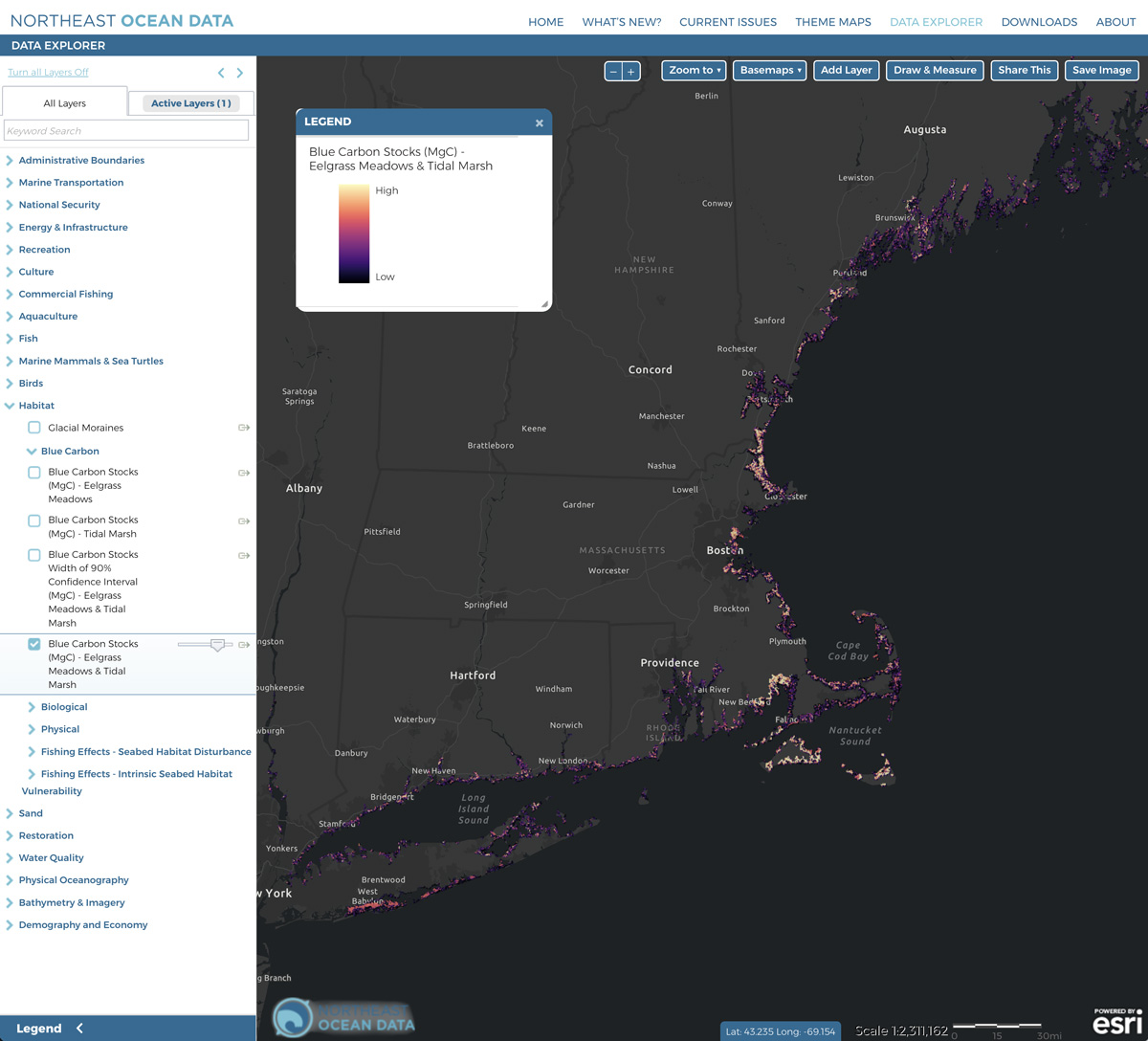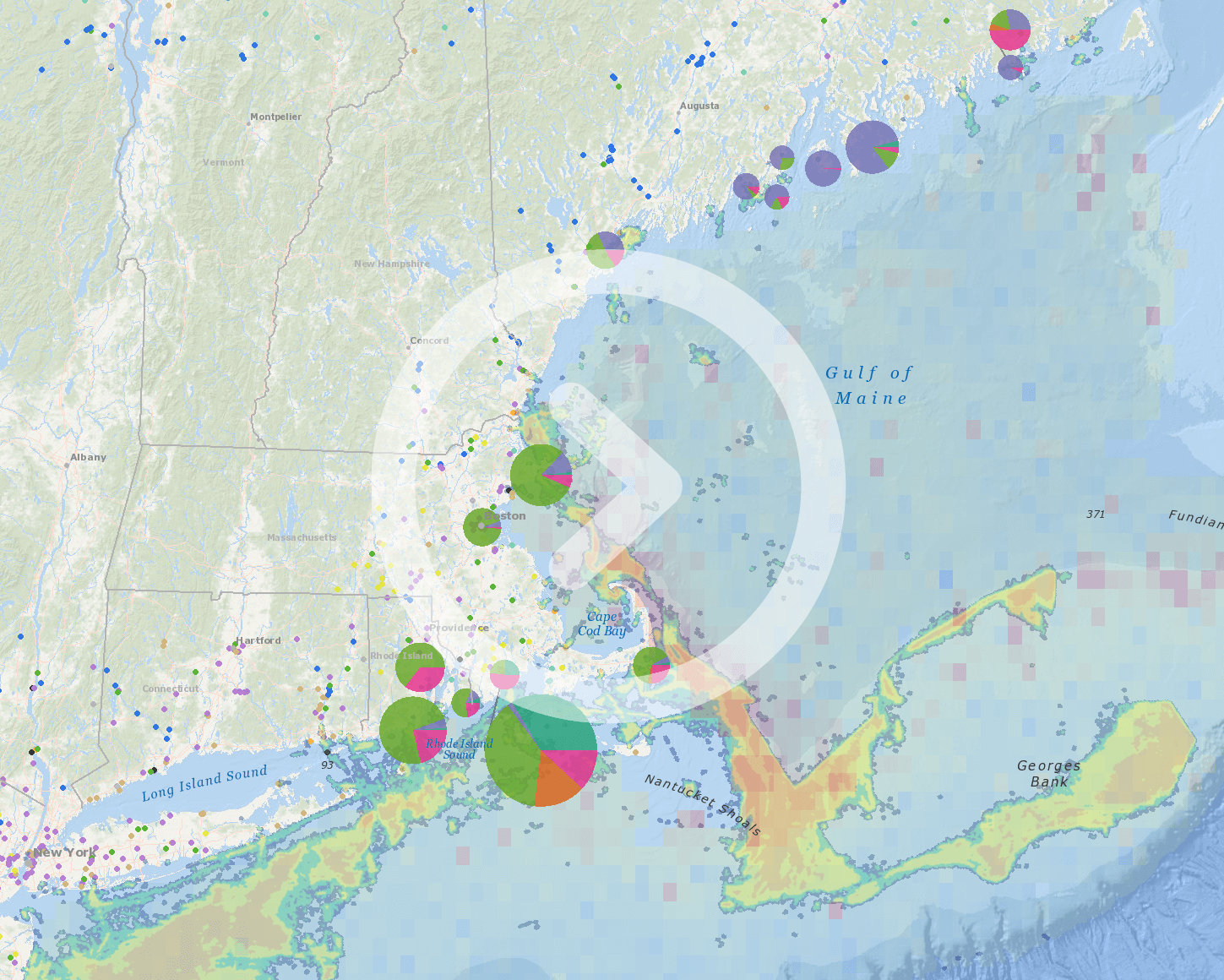Blue carbon stocks, including eelgrass meadows and tidal marsh, from Long Island, New York, to southeastern Massachusetts, as shown on the new Northeast Ocean Data Portal map layer.
The Workgroup focused its inventory efforts on salt marshes and eelgrass meadows, leveraging existing regional habitat maps available on the Northeast Ocean Data Portal. Additional existing data for soil organic carbon stocks were then used to calculate blue carbon stock estimates. For visual display purposes, sediment carbon heat maps were developed to highlight areas of greatest carbon accumulation. The heat maps can also be accessed on the Northeast Ocean Data Portal in the Data Explorer under Habitat > Blue Carbon. The Workgroup created heat maps for eelgrass and tidal marsh habitats individually as well as a heatmap showing blue carbon reservoirs for both coastal vegetation types together.
The findings from the Workgroup’s efforts and the resulting map products can help inform land and coastal management policies, fisheries management, and climate change mitigation practices. Further refinements and expansion of data are needed, including more detailed habitat maps, deeper soil core data for soil organic carbon content, and inclusion of more marine flora into calculations. The Workgroup will continue refining blue carbon data products in 2023-2024 through NROC’s Coastal and Ocean Ecosystem Health Committee.
More information:
- New England Blue Carbon Inventory Workgroup report: The Blue Carbon Reservoirs from Maine to Long Island, NY
- EPA Press Release: “Blue Carbon Reservoirs from Maine to Long Island NY” Report is now available
- Blue Carbon Heat Maps Metadata




